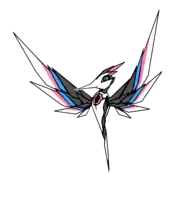Kate (text editor)
The KDE Advanced Text Editor, or Kate, is a source code editor developed by the KDE free software community. It has been a part of KDE Software Compilation since version 2.2, which was first released in 2001. Intended for software developers, it features syntax highlighting, code folding, customizable layouts, regular expression support, and extensibility.
 | |
 Kate in KDE Plasma 5 | |
| Developer(s) | KDE |
|---|---|
| Initial release | 2001 |
| Stable release | 20.12.2 (4 February 2021[1]) [±] |
| Repository | invent |
| Written in | C++ |
| Operating system | |
| Type | Source code editor |
| License | LGPL, GPL |
| Website | kate-editor |
History
Kate has been part of the KDE Software Compilation since release 2.2 in 2001.[7] Because of KParts technology, it is possible to embed Kate as an editing component in other KDE applications. Major KDE applications which use Kate as an editing component include the integrated development environment KDevelop, the web development environment Quanta Plus, and the LaTeX front-end Kile.
Kate has won the advanced text editor comparison in Linux Voice magazine.[8]
As of July 2014, development had started to port Kate, along with Dolphin, Konsole, KDE Telepathy, and Yakuake, to KDE Frameworks 5.[9]
Features
Kate is a source code editor that features syntax highlighting for over 300 file formats with code folding rules.[10] The syntax highlighting is extensible via XML files.[11] It supports UTF-8, UTF-16, ISO-8859-1 and ASCII encoding schemes and can detect a file's character encoding automatically.
Kate can be used as a modal text editor through its vi input mode.[12]
Kate features multiple document interface, window splitting, project editing[13] and sessions to facilitate editing multiple documents. Using sessions, one can customize Kate for different projects by saving the list of open files, the list of enabled plug-ins and the window configuration.[14]
Being a KDE application, Kate transparently opens and saves files over all protocols supported by KIO libraries. This includes HTTP, FTP, SSH, SMB and WebDAV, among others.
Kate's main text editor widget is called KatePart, which is reusable under the terms of the LGPL version 2 license.[15] It must not be confused with the KParts, a KDE plugin framework for user interface components that Kate also uses.[16]
See also
- List of text editors
- Comparison of text editors
- List of computing mascots
- Category:Computing mascots
References
- "KDE's February 2021 Apps Update". KDE. Retrieved 5 February 2021.
- "Distribution Packages". Kate-editor.org. KDE. Retrieved 23 March 2014.
- "Distributions Shipping KDE". Kde.org. KDE. Retrieved 23 March 2014.
- "Kate on Windows". kate-editor.org. KDE. Retrieved 10 February 2016.
- "Kate on Mac OS". kate-editor.org. KDE. Retrieved 10 September 2016.
- "Kate's Mascotthe Woodpecker". Kate | Get an Edge in Editing. 2014-10-12. Retrieved 2017-07-20.
- "2.1 to 2.2 Changelog". KDE.org. Retrieved 2015-07-02.
- "Issue 2 is Out!". LinuxVoice.com. Retrieved 2015-07-02.
- "KDE SC 4.14 wird 4er-Reihe abschließen". Golem.de (in German). 2014-07-10.
- "kate.git". Projects.KDE.org. Archived from the original on 2013-09-09. Retrieved 2020-01-29.
- Cullmann, Christoph (2005-03-24). "Writing a Syntax Highlighting File | Kate | Get an Edge in Editing". Kate-Editor.org. Retrieved 2015-07-02.
- "KDE's Kate Text Editor Gets Vi Input Mode". ArsTechnica.com. 2008-10-27. Retrieved 2009-05-04.
- "Using the Project Plugin in Kate". 2012-11-02. Retrieved 2014-09-24.
- "Using Sessions". Docs.KDE.org. Retrieved 2015-07-02.
- "KatePart | Kate | Get an Edge in Editing". Kate-Editor.org. Retrieved 2015-07-02.
- "KParts - KParts". api.kde.org. Retrieved 2020-10-30.
External links
- Official website

- Repositories:
- Kate: GitLab, cgit and GitHub (mirror)
- KTextEditor framework: GitLab, cgit and GitHub (mirror)
- KSyntaxHighlighting framework: GitLab, cgit and GitHub (mirror)
- Bug tracking: in Kate, in KTextEditor framework and in KSyntaxHighlighting framework
- Kate on Microsoft Store

